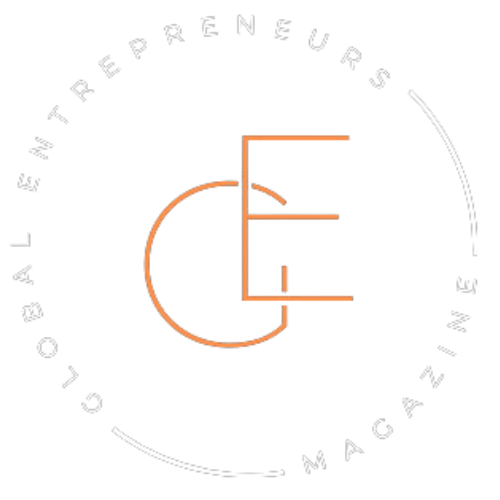It starts with an awkward silence.
Two people walk into a room—both trailblazers, both used to steering the ship. There’s no script, no polite small talk. Just an invisible pressure in the air, the kind that makes everyone else in the room pretend to check their phones.
They size each other up, not out of rivalry, but recognition. One sees a mirror. The other sees a challenge. They both sense it: this meeting could blow up—or it could blow open a new door neither of them could crack alone.
This isn’t about building consensus. Visionaries don’t meet to agree. They meet to spark. Sometimes to collide. And if the explosion doesn’t kill the idea, it might just forge something stronger.
Think about the collaborations you admire—the ones that shifted culture, technology, music, or business. They didn’t come from comfortable partnerships. They came from energy, discomfort, and two people refusing to play it safe.
Because when big minds meet, it’s not about harmony. It’s about chemistry.
Why lone genius is a myth that’s outstayed its welcome
We love a good solo hero story.
The genius in a garage. The writer holed up in a cabin. The founder who “built it all from scratch.”
But here’s the part that usually gets edited out: none of them did it alone.
Steve Jobs had Steve Wozniak. Wozniak had Jobs. One had vision so sharp it cut through markets. The other had the hands and the mind to actually build the dream. Apple didn’t start with a genius. It started with a duo—wired differently, but plugged into the same future.
Go down the list and it keeps happening. Sergey and Larry. Beyoncé and her early Destiny’s Child collaborators. Even in comedy, Lennon had McCartney, Key had Peele. Behind every so-called lone disruptor, there’s usually someone else who challenged them, matched them, or even pushed them off balance in the best way possible.
The “lone genius” idea is neat. It makes for a clean headline. But it’s fiction. What really moves things forward is tension. Friction. People who think differently, working toward something that doesn’t exist yet.
So when people say, “I work better alone”—maybe. But history suggests the most powerful ideas show up when someone else is in the room, too. Someone who doesn’t quite think like you.
The magic is in the friction
It’s not always friendly.
Sometimes the meeting ends with one of them walking out. Sometimes there’s shouting. Sometimes it’s just silence—cold, tense, and stubborn. But somewhere in that mess, something starts to move.
Friction isn’t a flaw in the process. It is the process.
When James Dyson couldn’t get investors to see the value in his cyclone vacuum design, he didn’t back down. He partnered with people who didn’t share his background but challenged his assumptions. The disagreements didn’t slow him down—they sharpened the product.
It’s easy to mistake conflict for dysfunction. But when visionaries clash, that tension can be a creative force. Not all friction is fire. Some of it is pressure that carves out a sharper shape, a better path.
Think of the arguments that don’t derail the project—but refine it. The pushback that forces better thinking. The stubbornness that keeps the idea from getting watered down.
It doesn’t have to feel good to be good.
Shared chaos, different strengths
They don’t see the world the same way—and that’s the point.
One talks in sketches and metaphors, dreaming five years ahead. The other thinks in systems, grounded in what’s possible today. One thrives in chaos, chasing sparks. The other brings order, asking hard questions no one else thought to raise.
They frustrate each other. Interrupt each other. One’s always trying to speed things up. The other keeps slowing things down. But in the tug-of-war, something starts to stretch—an idea, a product, a possibility that neither could’ve built alone.
This is what real collaboration between disruptors looks like: not perfect harmony, but purposeful contrast.
When Twitter was still a side project, Jack Dorsey and Biz Stone didn’t agree on much. Dorsey had the idea. Stone saw the communication potential. Their working styles clashed constantly. But somehow, in the space between Dorsey’s technical direction and Stone’s storytelling instinct, Twitter found its shape.
Collaboration among visionaries doesn’t mean becoming the same. It means creating enough space for differences to matter.
Ego isn’t the enemy—it’s the energy

You can feel it when they walk in. That quiet confidence. That sense that they know they’re the smartest person in the room—and they might be right.
Visionaries don’t shrink themselves. They show up full. With opinions, intensity, and sometimes, a little arrogance. But ego on its own isn’t the problem. The real trouble starts when no one in the room knows what to do with it.
Handled right, ego becomes fuel.
Kanye West and Virgil Abloh didn’t start as collaborators. They started as two creatives trying to outdo each other. One obsessed with breaking fashion, the other with rebuilding it. Both had strong ideas, strong personalities, and a strong need to win. But once they stopped competing and started creating together, the culture shifted. Their energy didn’t cancel out—it compounded.
That’s the secret. Let them bring their full selves to the table. Let them clash. Let them shine. Ego, when aimed in the same direction, becomes momentum.
You don’t need less ego in the room. You need people who know how to work with it—and still build something bigger than themselves.
Why the best collaborations often start messy
The early days rarely look like progress.
It’s missed calls. Half-baked pitches. One person getting excited while the other just blinks. Meetings that feel like they went nowhere. Ideas that sound brilliant in the moment but fall apart under the weight of actual work.
From the outside, it looks chaotic. From the inside, it is.
But that mess? It’s often a sign something real is forming.
Mess means both sides are trying to find the edge. It means they’re not faking agreement or nodding along to keep the peace. They’re testing each other, testing the idea, and refusing to settle for something that feels easy but empty.
Think about any great band’s first rehearsal. It probably wasn’t magic. It was noise. But somewhere in the off-key notes and rhythm clashes, a sound started to emerge.
You don’t polish a great partnership into existence. You let it get ugly first. Then, if the vision holds—if both people care enough to stay in the room—it starts to shape itself.
What it feels like to be in the room
There’s a certain charge in the air—subtle at first, but hard to ignore.
Someone’s pacing. Someone else is scribbling on a whiteboard like their life depends on it. No one’s checking the clock. Time bends a little in these moments. Hours pass like minutes. Then a silence hits—not the awkward kind, but the loaded kind. The kind where everyone’s looking at the same idea and realizing, this might actually work.
Being in the room with disruptors is not a quiet experience. It’s bursts of laughter followed by dead stares. It’s a clash of tones, tempos, and tempers. Someone always wants to move faster. Someone always wants to rethink the whole thing. No one’s coasting.
It’s exhausting—and electric.
You leave those rooms a little changed. Charged. Buzzing. A little confused, maybe. But somewhere deep down, you know something just shifted. Not every meeting sparks a movement. But the ones that do? You feel them before you see the results.
It’s not about productivity. It’s about potential. And some rooms carry more of it than others.
Why the world needs more of these collisions
Safe teams build safe things.
They follow the roadmap. Stick to the playbook. Keep the temperature low, the meetings pleasant, and the stakes manageable. That might keep the lights on—but it rarely lights anything up.
The world doesn’t move forward on politeness. It moves when bold people take risks together—even when they don’t fully agree, even when they don’t fully get each other.
We don’t need more meetings where everyone nods. We need more rooms where ideas clash, stretch, and break. Where someone challenges what’s always been done. Where someone else dares to rebuild it differently.
The best collisions aren’t just about big personalities. They’re about people who care so much about what could be that they’re willing to risk comfort to chase it.
Disruption doesn’t come from staying in your lane. It comes from veering off-course with someone else who’s just as wild, curious, and relentless as you are.
And the truth is, we’re all better for it.
What’s waiting on the other side of the collision
If it works, it’s not just a project—it’s a legacy.
The early tension fades. The chaos settles. What’s left is something sharper, stronger, and strangely inevitable. Like it was always meant to happen, but couldn’t have happened any other way.
The product might change the market. The idea might shift an industry. But what really lasts is what those people built together—and what they pulled out of each other along the way.
Sometimes, the biggest win isn’t the outcome. It’s realizing you’ve found someone who sees a different corner of the same future—and is just stubborn enough to chase it with you.
That kind of partnership doesn’t come often. But when it does, it’s unmistakable.
So here’s the question: who in your world makes you uncomfortable in the right way? Who pushes your thinking, rattles your rhythm, and challenges your easy answers?
That might just be the person you need to build something with.




